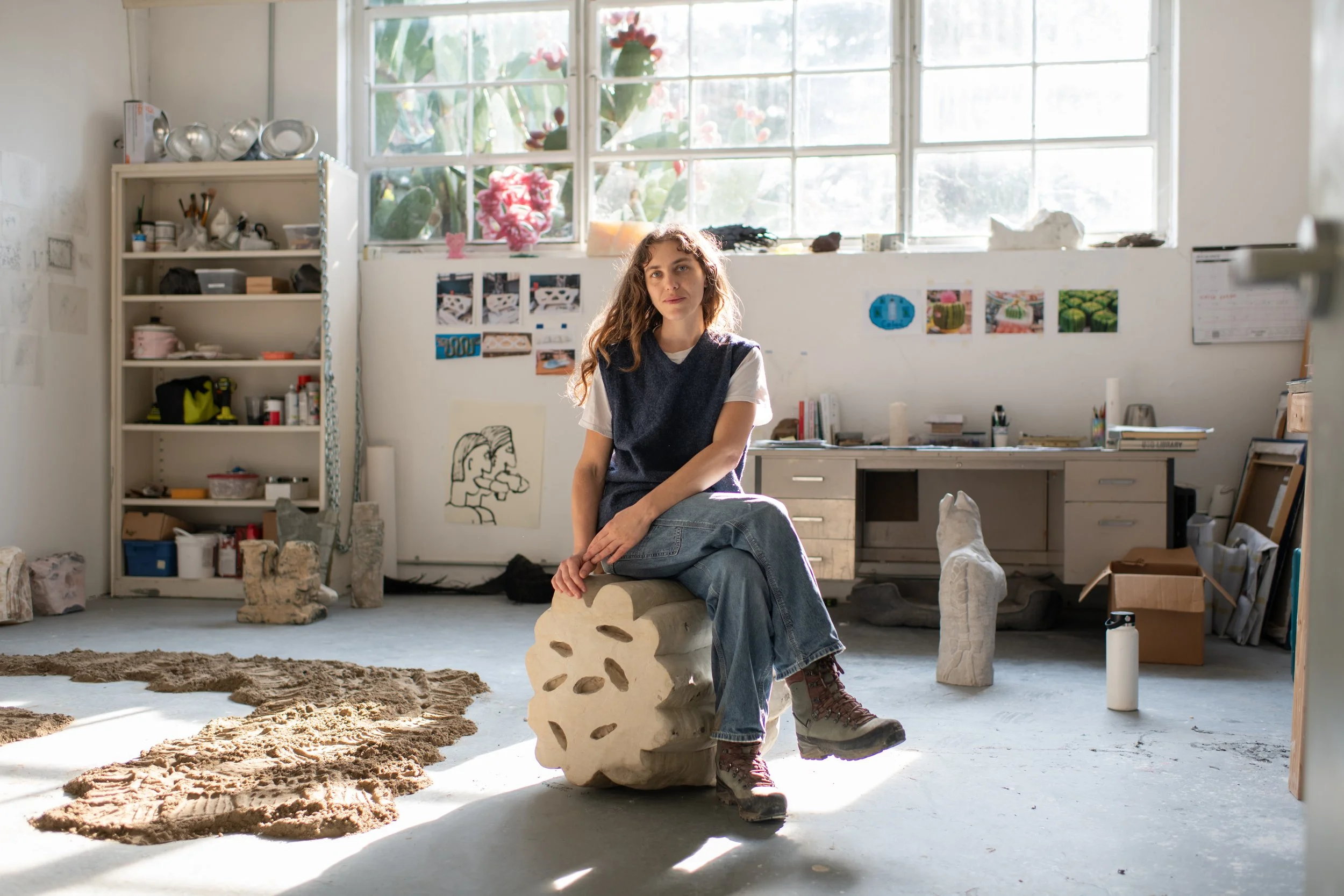
False Artifacts
Behind-the-Scenes for Give me no watches, I’ll have nothing to do with time
Cella Costanza
Photo Credit: Marjorie Williams
Cella Costanza is an artist based in Sacramento, California, originally from El Rito, New Mexico. Her work explores the intersections of mythology, material culture, and environmental collapse, navigating these terrains with humor, tenderness and despair.
Through sculpture and drawing, she reconstructs speculative worlds, creating artifacts that blur the boundaries between past and future, fact and fiction. To be raised in Northern New Mexico, is to grow up sandwiched between the sublime and the apocalyptic. It can feel like living in a place that time, progress and modernity forgot, or a place that has purposefully hidden from all those things.
Past Works
‘Which way is tomorrow’
2024, Ceramic, auto body paint
3 legged donkey dog
2024, Limestone, wax
Behind The Scenes:
False Artifacts
Behind-the-Scenes for Give me no watches, I’ll have nothing to do with time
In a thrift store window in San Francisco in 2013, a blue plastic flip-flop with a kitten heel and slender straps lay nestled among piles of trinkets. It caught Cella’s eye. Twelve years later, that ordinary object lives on as the stone sculpture before you, as part of Cella’s reflection on myth, consumerism, and time.
Drawing from an Aztec folklore of a two-headed snake, Cella reimagines this deity of cyclical time as a mass-produced sandal. She fused two opposing worlds into conversation: one shaped by urgency, disposability of the now, and one anchored in the endurance of the past. The act of stone carving becomes a form of resistance, like turning a flip-flop into cornerstones in the time cycle. She responds to a culture that moves too fast and forgets too easily.
However, for Cella it’s never necessary to add sorrow to a world already full of heartbreak. Instead, she carves with a sense of playfulness and a belief in beauty.
Cella creates a permanence by carving stone, but even this permanence is conditional. Like the original sandal, the memory of the object may erode with time. She imagines a future viewer stumbling upon these sculptures and mistaking them for sacred relics, completely unaware of their mass-produced origins. This misread isn’t false; it’s the intention. Cella recalls the “inherently flawed” in archaeology and anthropology, where objects are shaped by shifting interpretations, and she mirrors that speculative logic. By planting these false artifacts, she plays with the gap between the known, the guessed, and the truth.
What we saw at Cella’s studio was unfinished, but that form might appear again as things waer off. When she sands down its surface, those uneven abrasions could come back as time pass. Eventually, what’s left? When decay takes place on this sculpture, is time drifting toward the snake’s head, or its tail?
Photo credit: Livia Xie
Writer Edgar Zhang Editor Rachel Wang
Back to Art Studio Graduation Thesis 25’
The physical booklet will be available in the lobby at @manettishrem throughout the show, June 5 to June 22, 2025.









